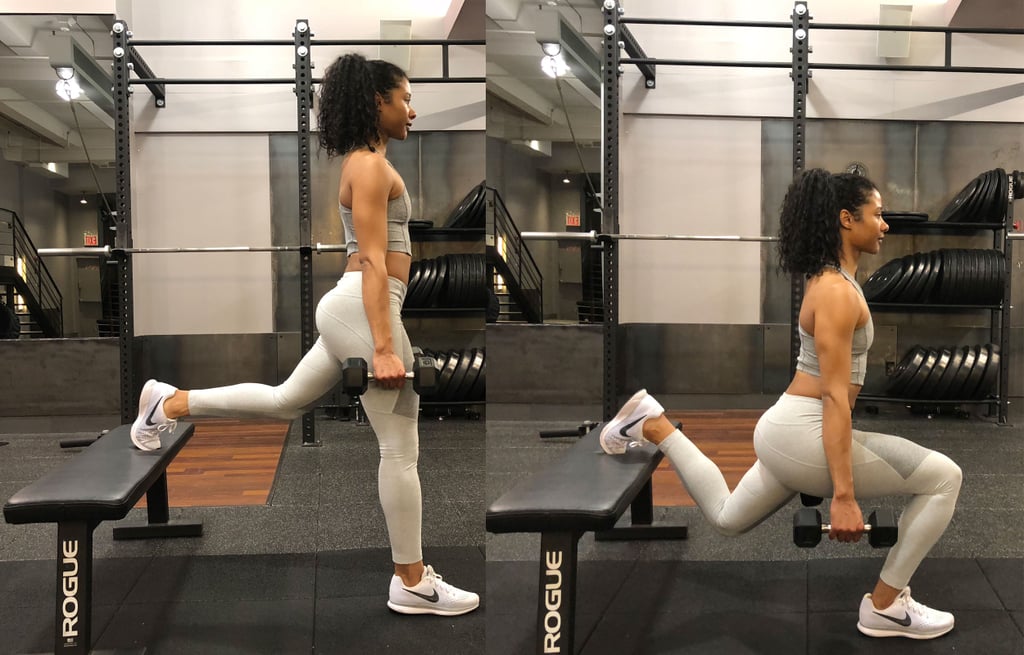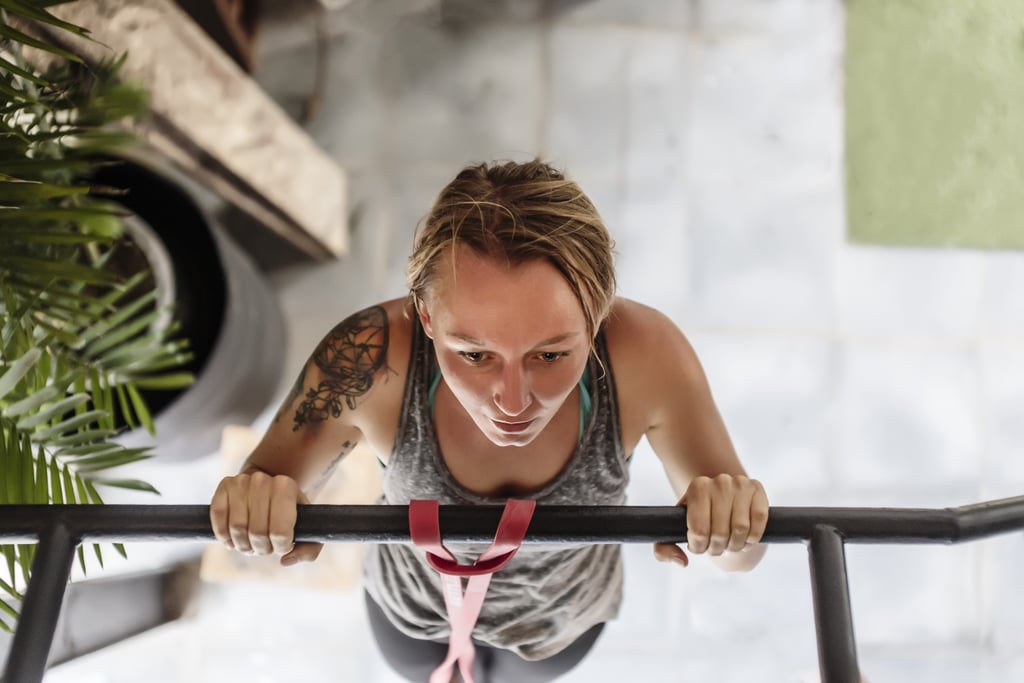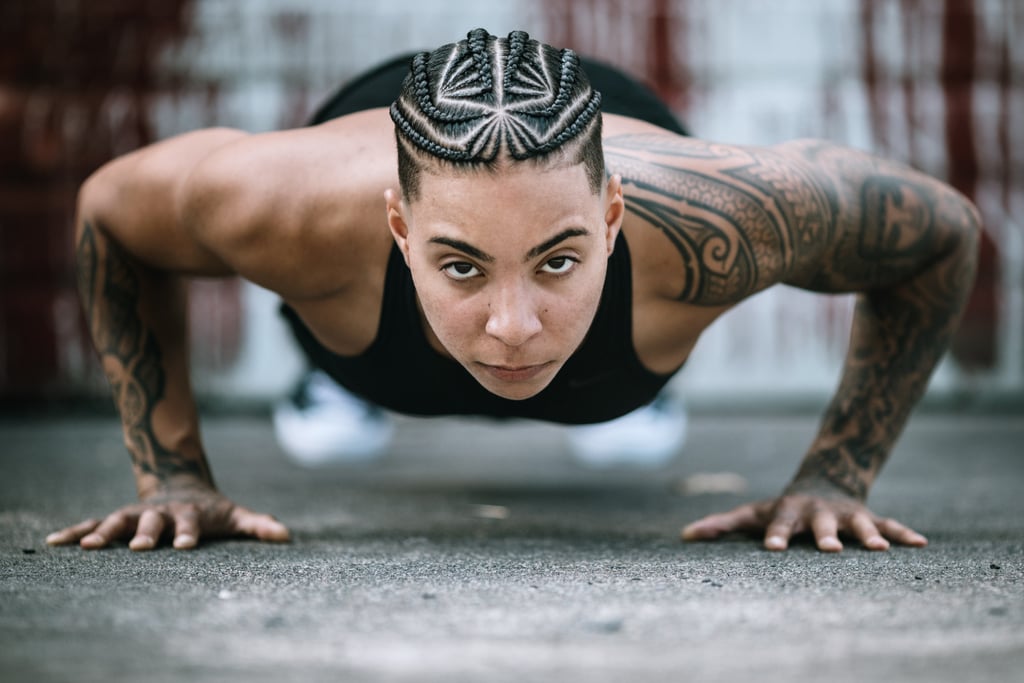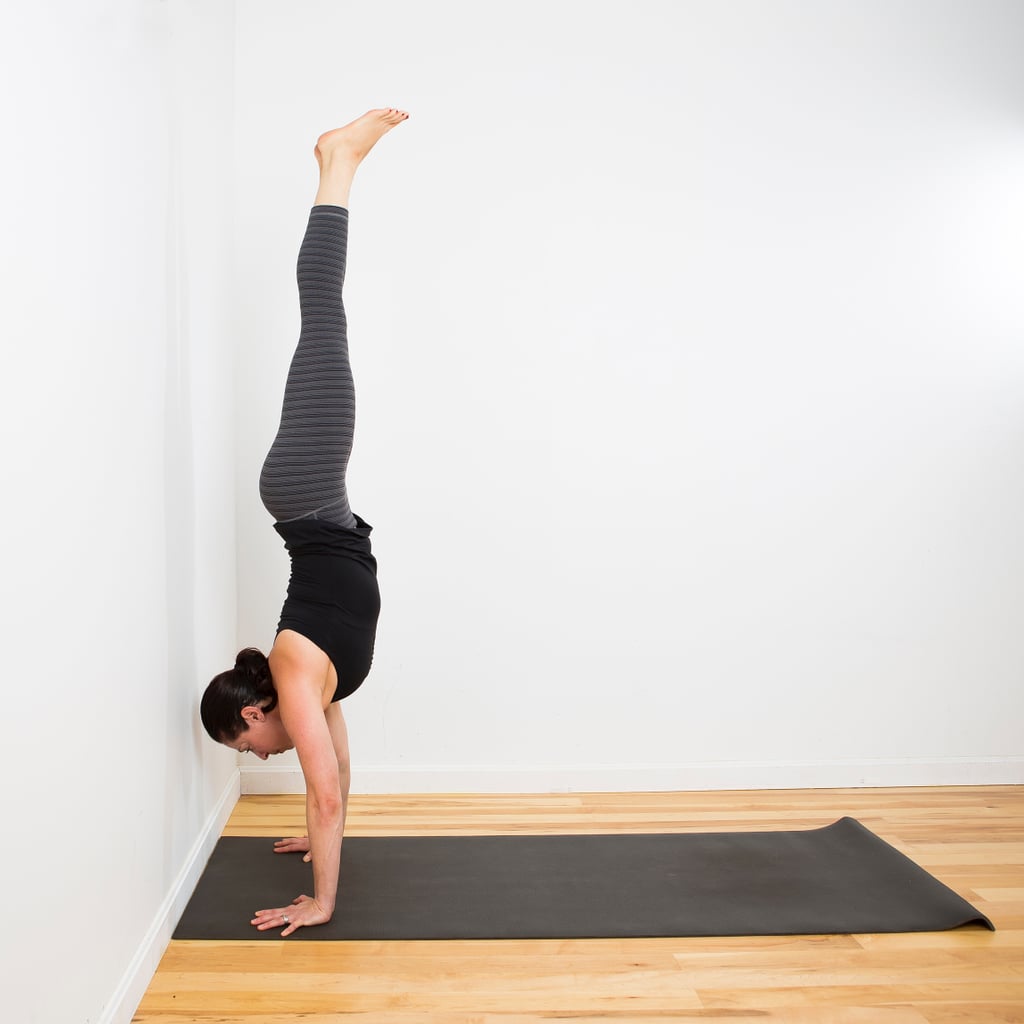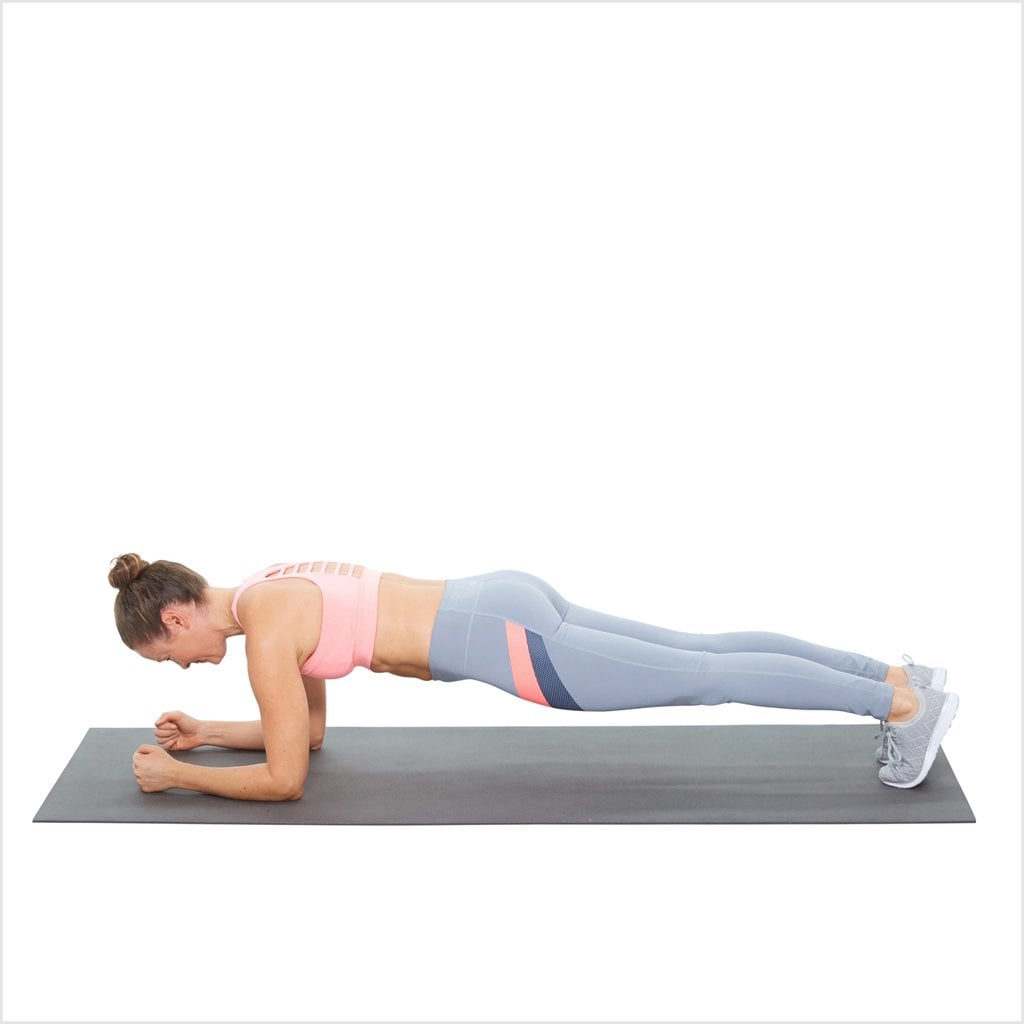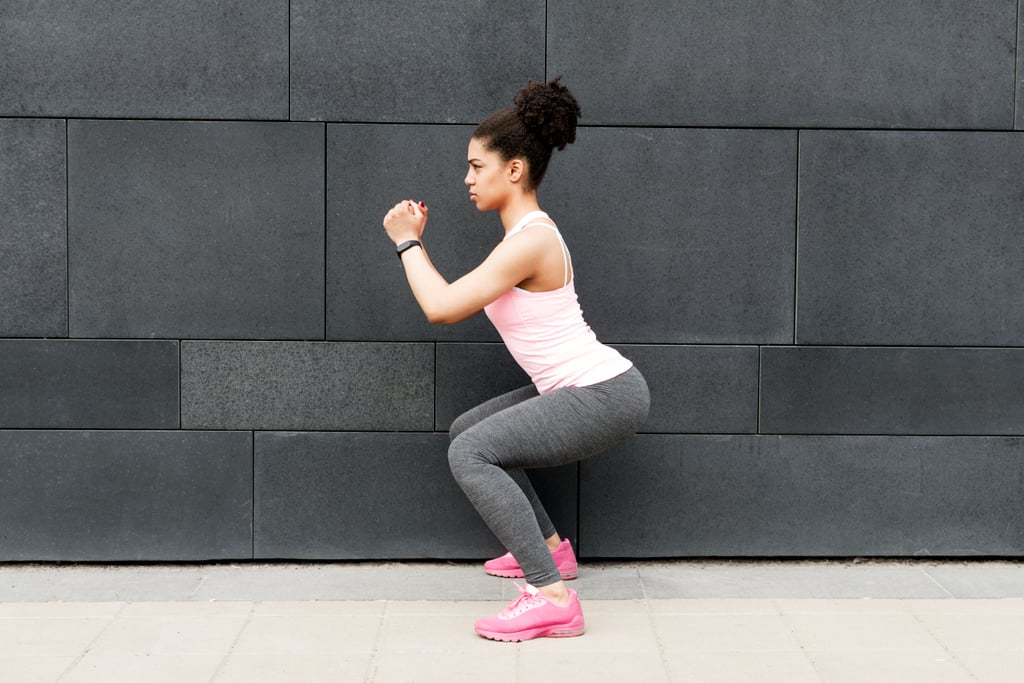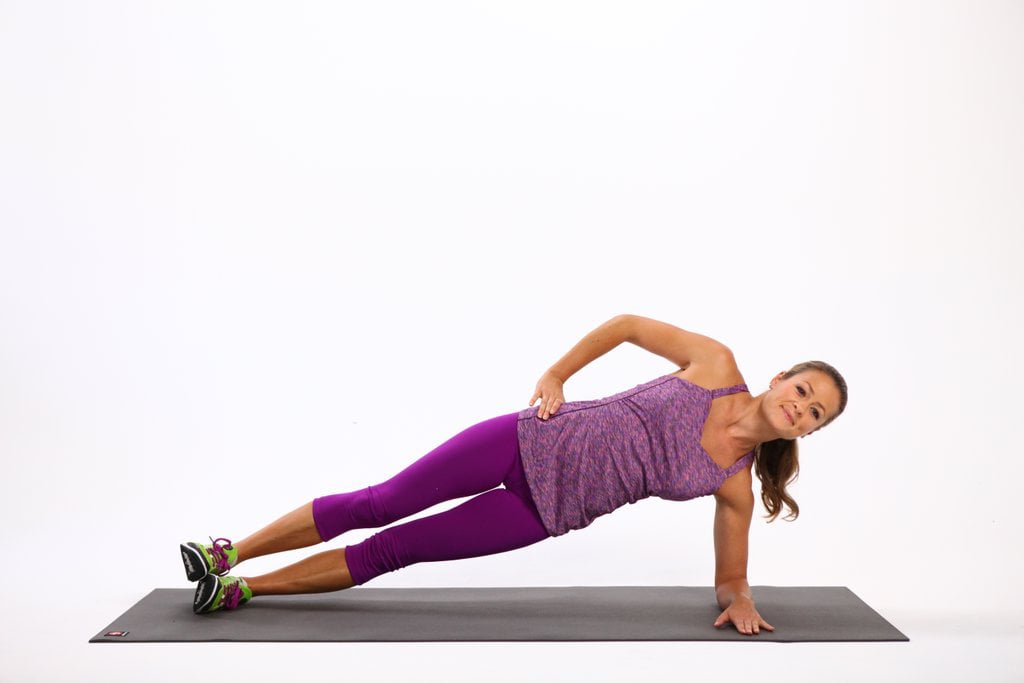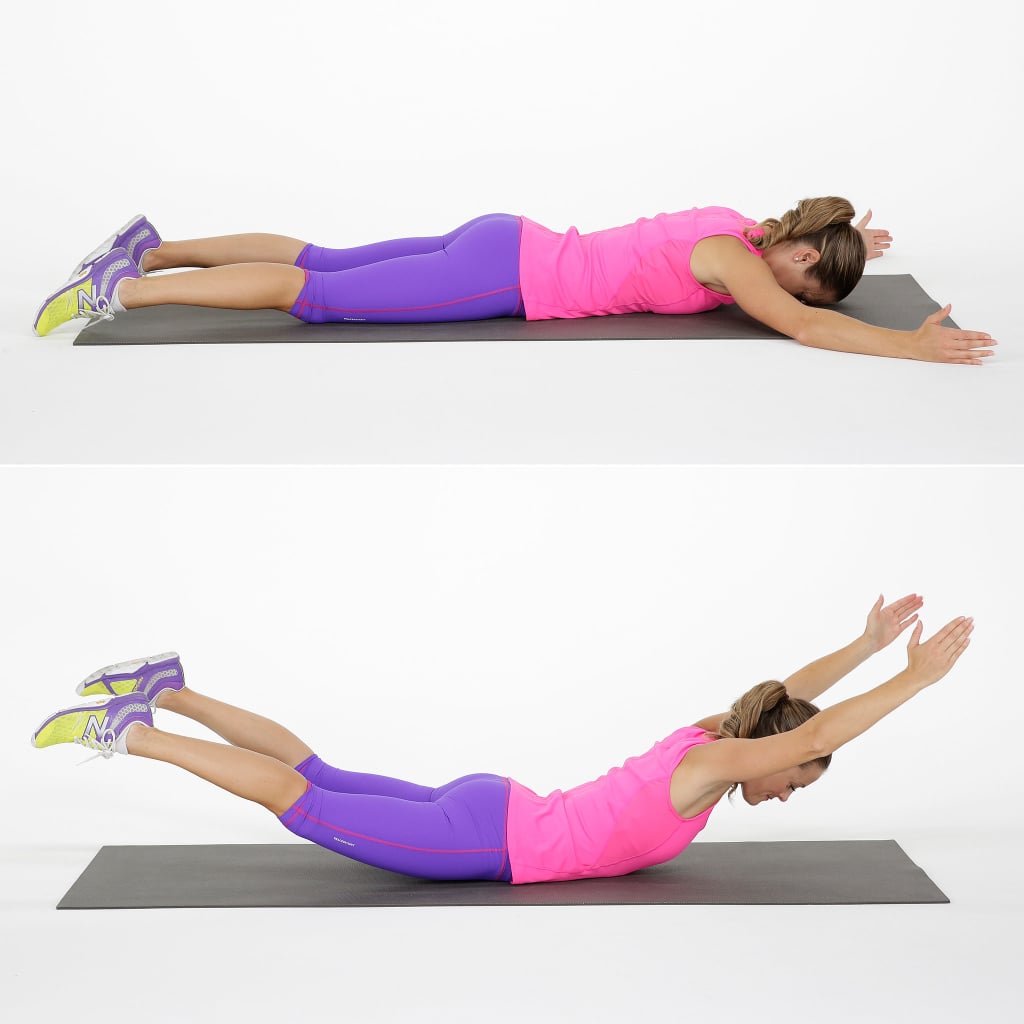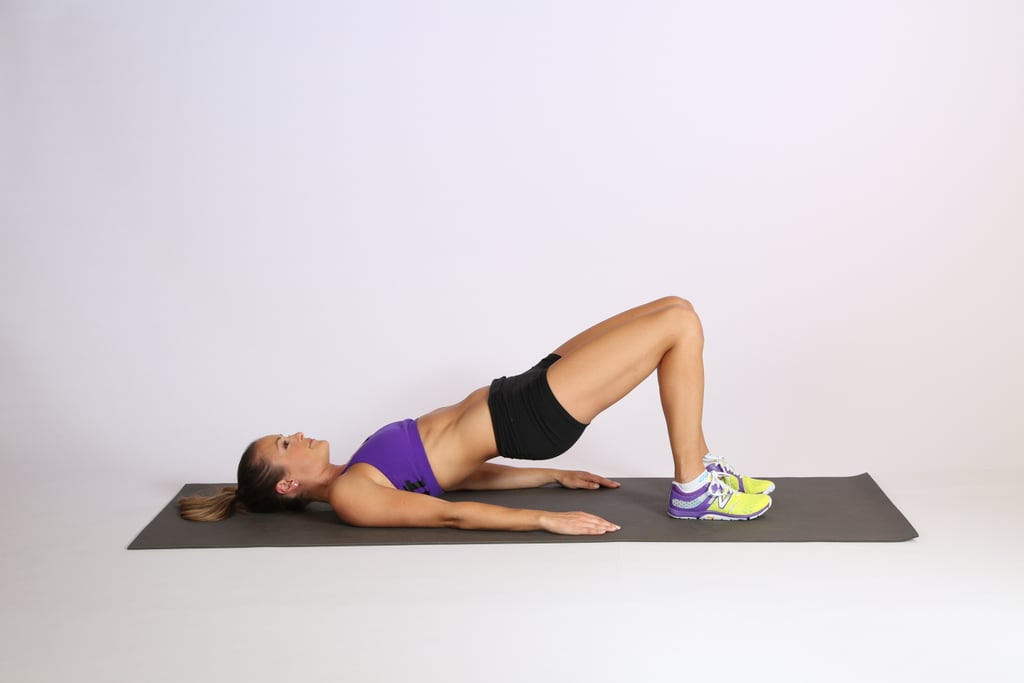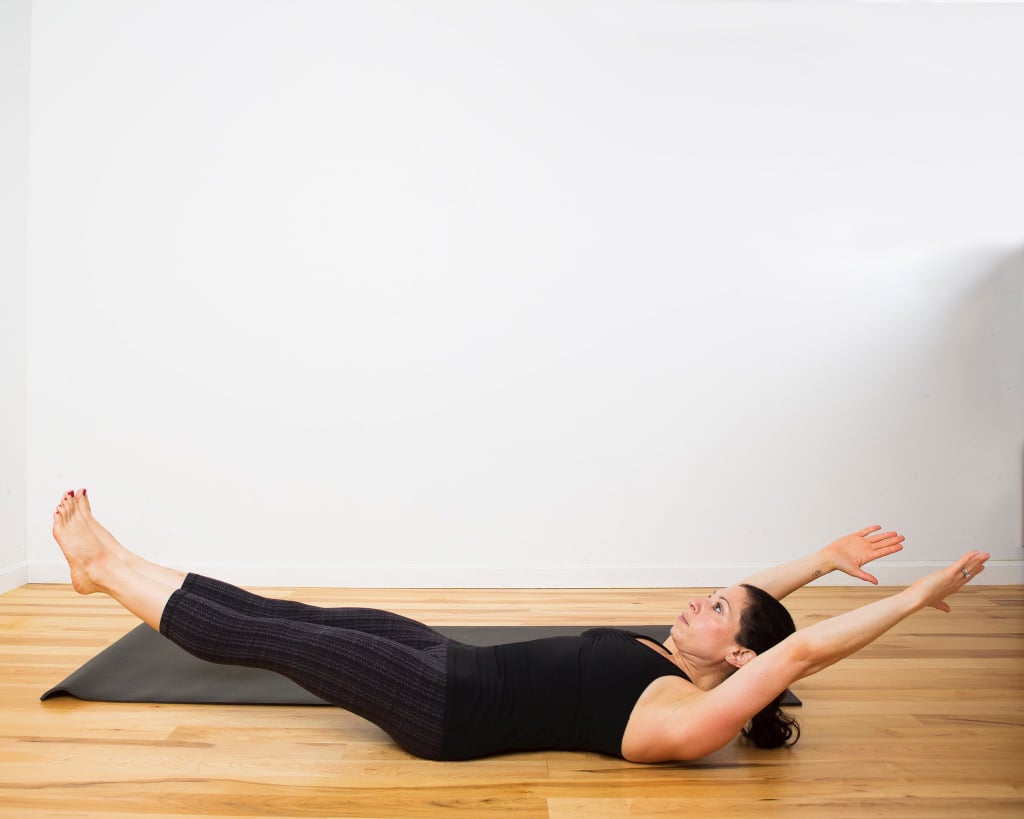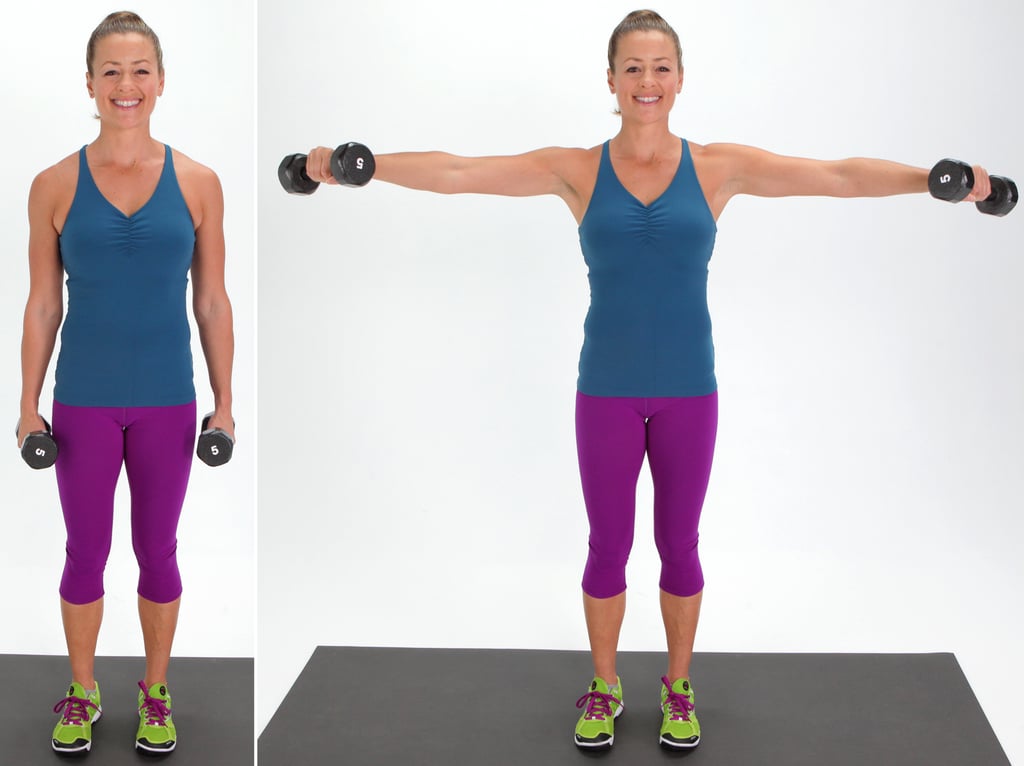You don't necessarily need to do a ton of high-impact moves in your workouts. Case in point: isometric exercises, or static holds, that recruit your muscles [1] with time under tension [2]. These can look like holding a squat, hollow hold, or wall sit.
NASM- and NCCPT-certified personal trainer Monica Jones told POPSUGAR that doing isometric squats, for example, will help someone who is hoping to increase their weight on a barbell squat or get better at squatting for higher reps and longer periods of time because holding that static squat increases strength and stability in the recruited muscles.
Mike Moreno [3], district fitness manager at Chuze Fitness and NSCA-certified personal trainer, told POPSUGAR that isometric exercises are useful alternatives to dynamic movements that aggravate a person's joints or cause muscle pain [4]. Plus, he added that they can keep workouts fresh and interesting.
Josh Honoure [6], NASM-certified personal trainer and coach for Row House, agreed that because these moves are low-impact, they don't "wear and tear" on your joints. "In fact, isometric exercises are excellent for strengthening your connective tissues, also known as your tendons and ligaments which hold everything together, because you are holding a contraction for an extended length of time," he said. "This will help prevent injury as well."
It's important to note that board-certified sports clinical specialist Leada Malek [7], PT, DPT, CSCS, told POPSUGAR that it's recommended, at times, for people with high blood pressure or heart conditions to avoid isometric exercises or be cleared by a healthcare professional to do them. "This is because holding a contraction may cause a change in blood pressure beyond what's safe for the individual," she said. "In these cases, it's better to err on the side of caution and speak to your doctor first."
Ahead, check out a handful of isometric moves recommended by trainers. You'll find lower- and upper-body exercises as well as some great core burners. You can use weights for moves that are presented as bodyweight exercises, too, and you can also tack on static holds to the end of isotonic exercises [8] — holding a squat after 10 traditional squat reps, for example. Our muscles do not stay at the same length during isotonic movements like squats and instead change length (shorten and lengthen) as they resist tension.
The moves that follow are by no means a workout, but take these suggestions into account the next time you get your sweat on.
Love trying new workouts? Want a community to share your fitness goals with? Come join our Facebook group POPSUGAR Workout Club [9]. There, you can find advice on making the best out of every sweat session and everything else you need to help you on your road to healthy living.
Bulgarian Split Squat Hold
Tim Liu [11], CSCS, told POPSUGAR that he likes Bulgarian split squat holds because they help build knee stability and also work the glutes. You should be holding the 90-degree position that your front leg makes at the bottom of the exercise.
- Hold a dumbbell in each hand (or you can do this exercise without weights). Begin by placing the toes of your left foot on a bench, box, stair, or chair, with your right leg straight.
- Make sure your right foot is out far enough so that when you lower your hips, your knee stays directly over your ankle.
- Bend your right knee, squeeze your left glute, and lower toward the ground until your right leg is at a 90-degree angle.
- Liu suggests holding this for 10 seconds either before or after performing 10 to 12 reps of traditional Bulgarian split squats.
Pull-Up or Chin-Up Hold
Liu is also a fan of isometric pull-ups or chin-ups where you hold your chin above the bar.
- Place both of your hands on a pull-up bar with your palms facing away from you (pull-up) or facing toward you (chin-up).
- With a neutral spine and your abs engaged, pull yourself up so that your chin is just above the bar.
- Hold this position, and focus on engageing your back muscles and keeping your shoulders pressed down away from your ears.
- Liu suggests starting with 10- to 15-second holds where you can maintain tension in your upper back and core, then work your way up to 30- to 45-second holds.
- To make this move a bit easier, stand on a chair or stable surface and jump up so that your chin is above the bar (meaning you don't have to do an actual pull-up or chin-up before going into your isometric hold).
- You can also do this hold with a large resistance band around the bar (like you'd use if you were doing assisted pull-ups [12]), placing your foot in the bottom of the band and pulling yourself up that way.
Push-Up Hold
Tara Nicolas [13], a NASM-certified personal trainer from Fhitting Room, told POPSUGAR that isometric holds "build strength, efficiency, endurance, and confidence in some of the hardest phases of an exercise." In a push-up, that's where you've done the eccentric part of lowering yourself down and you need to generate enough power to push back to your plank position.
- Come into a plank position with your arms and legs straight, your shoulders above your wrists, and your glutes and abs engaged.
- Take a breath in.
- As you exhale, bend your elbows out to the sides and lower your chest toward the ground. Stop as soon as your shoulders are in line with your elbows.
- Hold yourself in this position for 15 to 30 seconds, Nicolas suggests, before pushing back up to your plank position or lowering all the way to the floor to take a break.
- If this is too difficult, do the exercise with your knees on the floor.
Handstand Against the Wall
Handstand holds against a wall are one of ob-gyn [14] and NASM-certified personal trainer Brittany Robles's favourite isometric exercises. She told POPSUGAR she's a fan of these because they're "great at developing shoulder and tricep strength." Here are nine moves for learning how to do a complete handstand [15], but Dr. Robles said you can also practice holding yourself up in a piked push-up position [16] with your feet on the floor or elevated on a surface.
- Place your hands approximately six inches away from the edge of a wall.
- Kick your feet up, press the top of your head against the wall, and move your legs away from the wall. This will get your body in the correct alignment with your hips and shoulders stacked.
- Squeeze your legs together, and keep your core engaged.
- If you can't hold your legs away from the wall, use the wall as support with your back and lower body against it (you'll have to move closer to the wall with your hands).
- Dr. Robles suggests holding a handstand for 15 seconds. As you get stronger, increase the amount of time you hold your handstand.
Elbow Plank
Kristina Jennings, CSCS, CFSC, and coach at Future [17], told POPSUGAR that planks help people build a solid foundation for core strength. "Without core strength, we wind up compensating and using our spine and back to control exercises," she said. "This is not ideal because it can cause stress to the back, resulting in injury."
- Start on the floor, resting on all fours.
- Step your feet out one at a time, coming into a plank position with your spine parallel to the floor and your abs pulled in.
- Hold for at least 10 breaths, Jennings said.
Squat Hold
Jennings also said that "iso squat holds are a key intro to bodyweight squats while helping to engage our quads, glutes, hamstrings, and core."
- Stand with your feet shoulder-width apart or slightly wider and with your chest tall. Extend your hands straight out in front of you, hold them at chest level, or place them behind your head.
- Bend at your knees and hips and press your weight back into your heels with your knees over your ankles, pushing your butt out like you're sitting onto a chair. Keep your chest lifted, and do not let your lower back round.
- Squat down as low as you can, still keeping your head and chest lifted.
- Jennings said to hold for 15 seconds before standing back up.
Side Plank
NASM-certified personal trainer and registered dietitian Leah Barron [18] told POPSUGAR that she likes side planks because they build core stability, which in turn helps us keep proper form during weightlifting and maintain proper posture in our daily lives.
- Begin by lying on your left side. Bring your left elbow directly under your left shoulder. Stack your feet on top of each other, or stagger your feet in front of each other.
- Press your left elbow into the floor, and rise into side elbow plank with your abs pulled into your spine.
- Barron suggests holding your side plank for 30 seconds and increasing your time by five to 10 seconds each time you work out if you feel comfortable.
Wall Sit
Malek said doing wall sits prior to quad-dominant exercises, like squats, is a great way to warm up because you're holding a position with "less joint compression and greater muscle recruitment."
- Stand with your back against a wall. Your feet should be hip-width distance apart or a tad closer.
- Bending your knees, slide your back down the wall until your knees are at 90-degree angles.
- Your knees should be over your ankles as you hold this position.
- Malek suggests holding the wall sit for 20 to 60 seconds.
Superman Hold
Malek also likes superman holds because they activate the posterior chain muscles (muscle on the backside of your body), which include the glutes and hamstrings among other muscles along the spine. "These muscles are imperative for stability and help protect the back, so it's great to activate them even before lifting," she said.
- Lie on your belly, and extend your arms straight out in front of you.
- Pull your belly button into your spine.
- Lift your legs, arms, and chest off of the floor, squeezing your glutes and legs as you do and keeping your arms by your ears.
- Malek suggests holding this position for 20 to 45 seconds before slowly releasing your body back to the floor.
Glute Bridge Hold
Jones recommends glute bridge holds also known as "isometric glute bridges." She says they're useful for engageing the glutes.
- Lie on your back with your knees bent and feet flat on the floor. Be sure to keep your feet underneath your knees, not in front. Plant your palms by each side, facing down.
- Press through your heels to raise your hips up to the ceiling, tensing your abs and squeezing your butt as you do. You should be making a long diagonal line with your body from your shoulders to your knees.
- Make sure your spine doesn't round and your hips don't sag. Keep your abs and butt muscles engaged.
- Jones suggests holding this for 30 seconds.
Hollow Body Hold
Honoure said, "Hollow holds really challenge the abdominals, especially your lower abs, and help sculpt and tone your core. This is a great move for improving posture, and I personally like it because it helps strengthen my rowing."
- Begin on your back with your legs straight and your arms extended overhead.
- Actively press your lower back into the floor, and draw your belly button into your spine.
- Inhale to slowly lift your shoulders, arms, and legs off of the floor.
- Keep your hands and heels as low to the ground as possible while still pressing your lower back into the floor. Maintain tight abs and glutes. It's OK to bend your knees to modify the move.
- Hold for 30 seconds.
Lateral Arm Raise Hold
Anna Victoria [19], NASM-certified personal trainer and Fit Body app [20] creator, told POPSUGAR that she's an advocate for isometric exercises because they increase the strength and endurance of your muscles being engaged. Isometric upper-body strength moves, she said, are her favourite. Here's one of them: lateral arm raise holds.
- Stand with your feet hip-width distance apart. Hold a dumbbell in each hand so your palms face in toward the sides of your body.
- Keeping your core tight and your arms straight, raise the dumbbells toward the ceiling until you get to shoulder height.
- You want your palms to be facing down and your arms to be parallel to the floor.
- Victoria suggests holding this for at least three seconds before lowering your arms back down to your sides.


